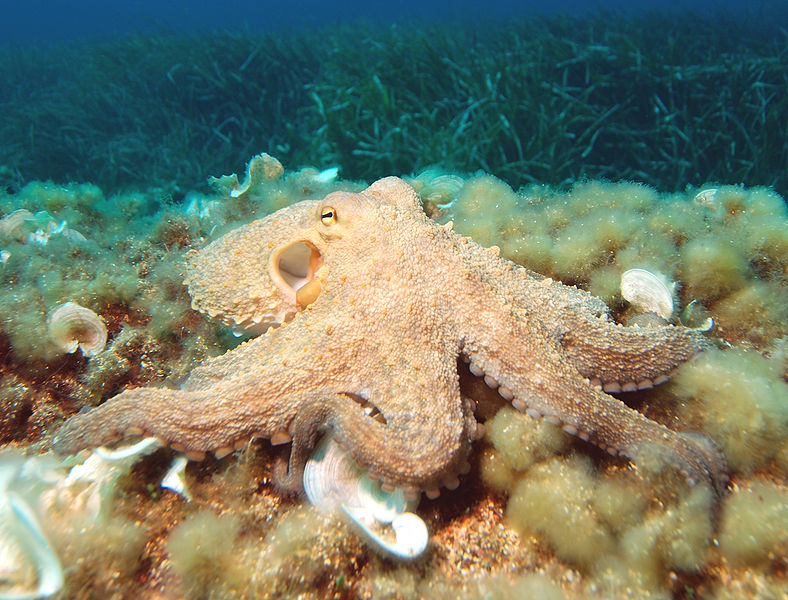A new fossil study reveals that the ancient ancestors of octopuses, squid, and cuttlefish have been swimming through the oceans for at least 30 million years longer than previously thought.
Originally only a single fossil of a mysterious creature named Nectocaris pteryx was found in the famous Burgess Shale deposits in Canada. And for a long time researchers were stumped as to what kind of animal it was.
 Now, writing in the journal Nature, Martin Smith from the University of Toronto leads a study that reveals a series of key characteristics that tie Nectocaris to the group of molluscs, including octopuses and squid, known as cephalopods.
Now, writing in the journal Nature, Martin Smith from the University of Toronto leads a study that reveals a series of key characteristics that tie Nectocaris to the group of molluscs, including octopuses and squid, known as cephalopods.
Over 90 new specimens have been found of the tiny creatures that were between two to four centimetres long. They had large, stalked eyes and a long pair of grasping tentacles, which they probably used to hunt for and eat prey. The researchers think they used jet propulsion to push themselves along by forcing water through a nozzle-like funnel, like many modern cephalopods do today.
Nectocaris evolved around 500 million years ago, not long after the so-called Cambrian explosion when a plethora of complex, multicellular life emerged over a short period of time setting the stage for the evolution of many groups of animals still around today.This study changes the commonly held view of the cephalopods not only because it pushes back the date when they first evolved, but it also offers insight into how they evolved into other modern and extinct forms. Nectocaris had no hard shell and it swam actively around the ocean, which goes against theories that cephalopods first evolved from ancient, bottom-dwelling molluscs with heavy, hard shells which later evolved into the floating devices found inside other cephalopods, the extinct ammonites and living chambered nautilus.
Many questions still remain about Nectocaris and the beginnings of the cephalopods but we now have a much clearer picture of what was going on 500 million years ago. We even know how some of these Nectocaris creatures died: their gills are choked in fine deposits, telling us they were probably buried in an underwater mudslide.
- Previous Good and bad news for bluefin tuna
- Next Testosterone trashes trust










Comments
Add a comment